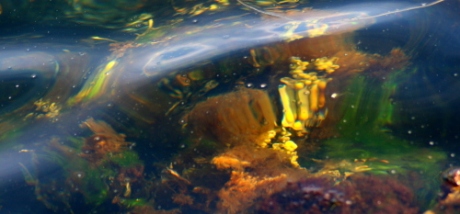15

Photo: Scott Murray
The shroud picture falls a second time
It was a great shock for both of us when Margaret was diagnosed with stomach cancer on the 28th June, 2012, a month after the shroud image of Jesus had fallen of the table in the hall. We were both worried and stressed about what the diagnosis could mean. On the 5th July Margaret thought she would go and buy a packet of cigarettes – she had once been a smoker and she felt she needed a cigarette. She went to have look to see what the weather was like. As she passed the table in the hall, the picture of Jesus fell to the floor.
Needless to say, she didn’t buy cigarettes and she hasn’t smoked since. Later, when she was getting chemo and she was suffering with her throat, it became clear that if she had been smoking, it would have been the last straw.
Outwith our volition
In thinking about the fall of the stick and then the picture, several thoughts come to mind. These things happened entirely outwith our volition; it was some power outwith our control that made these objects fall. In the case of the picture it was very specific, it was the picture of Jesus. Indeed, it was as if Jesus was speaking to us. Any object in the house could have fallen, but in this case it was the shroud picture of Jesus. I have thought about this ever since and I have thought, how utterly extraordinary!
The extraordinary conclusions
What is equally extraordinary are the following conclusions that could be drawn from what happened: Whatever was moving the picture and the stick appeared to know all about us. It appeared to know what was to happen in the future. It appeared to care for Margaret and what might happen to her, for example, by stopping her smoking. This, of course, all accords with what it says in psalm 139: ‘You search out my path and my lying down and are acquainted with all my ways.’ (V3) and Such knowledge is too wonderful for me; it is high; I cannot attain it.’ (V6).
All the things that happened led me to the conclusion that philosophical materialism cannot be true. Rather there is spiritual reality – what Jesus calls the Father – that knows all about us. But it will only help us when we truly trust and seek him. As it say in psalm 50, V15: ‘call upon me in the day of trouble; I will deliver you, and you shall glorify me.’ Whether this help comes in this life or the next, who is to say?
The surgeon phones
It was in the evening of the 5th, the day the picture fell, that the surgeon phoned to let Margaret know the result of the scan she had on the previous day. He confirmed that cancer was confined to the stomach with one lymph node affected. In these days a lot of people were praying for Margaret’s recovery. On the 16th the surgeon phoned again and told her she would be getting three doses of chemo over the next few months. On that day the verse I got for her was this: ‘God in the midst of her doth dwell;/ nothing shall her remove:/ The Lord to her an helper will, / and that right early prove.’ In the midst of despair, I knew it meant something.
The reality of the numinous
The decline of Christianity, and indeed religion, in the West is a multi-faceted phenomenon, declining church attendances, young people’s indifference to religion, postmodern claims that there is no absolute truth, a growing secularism. The list could go on and on …
But when we scratch the surface we find something very different. What Otto calls the numen, the appearance of the divine, the wholly other, is still there whether we like it or not. It is not a merely an archaic left-over from ‘primitive’ societies. It makes its appearance from time to time and it is not something that can be willed to happen. Yes, it is the irrational side of religion, the unknowable, but it complements and sustains the rational side, namely, the written word and the dogmas of the church.
For the Christian, it reached its culmination in Jesus Christ, the Word made flesh. The hidden numen appeared fully clothed and made its presence evident by signs and miracles, but also spoke in words that could be understood.








